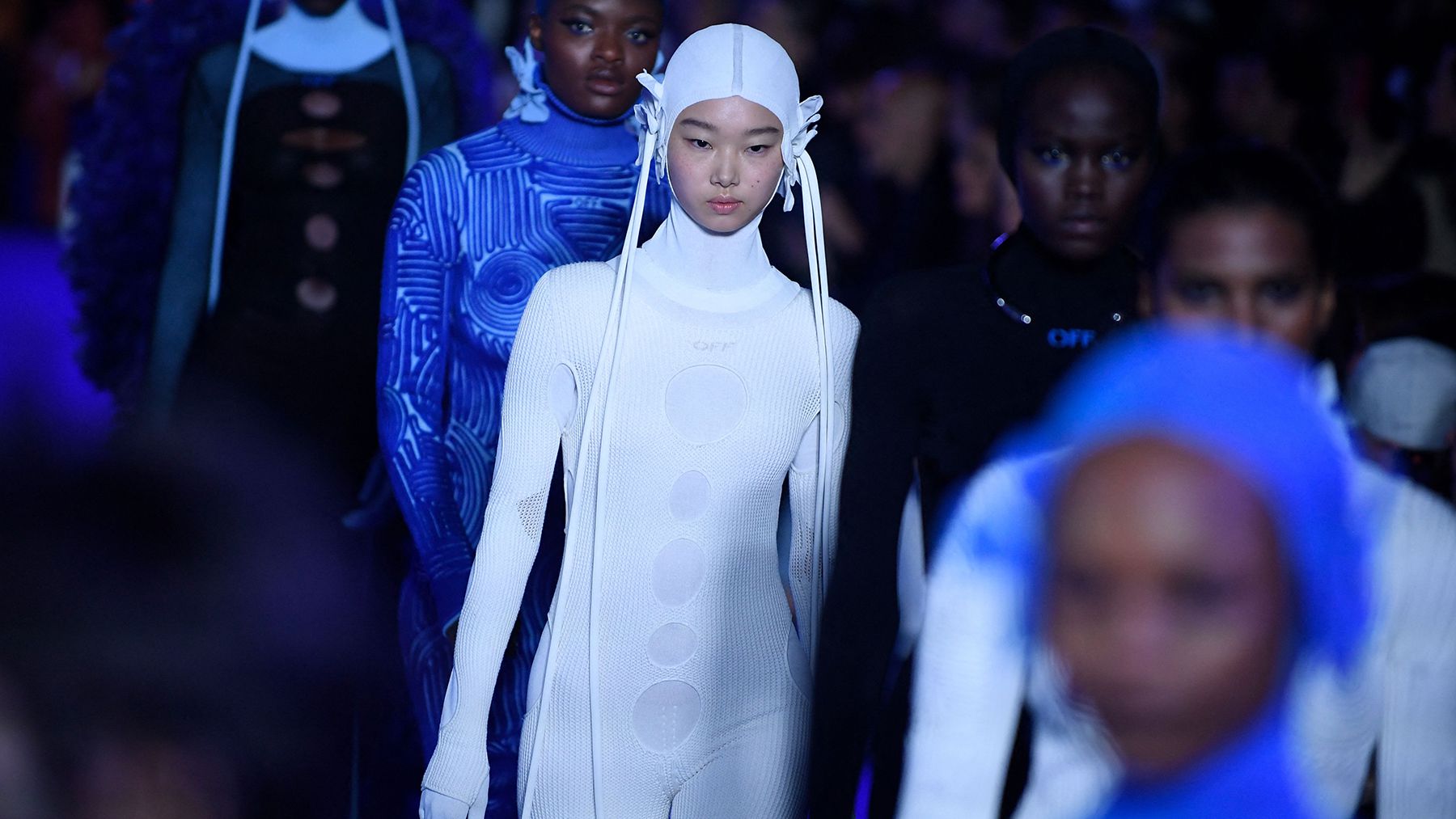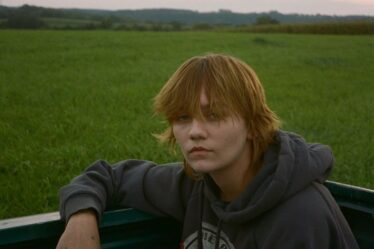
PARIS — Rick Owens couldn’t use Mahler on his soundtrack again. He didn’t want a retread of Winter’s emotion-drenched tour de force. Then he heard Siouxsie and the Banshees’ 1984 hit “Dazzle,” with an ebbing and flowing string section that sounded like an extension of the Mahler symphony.
Still, he has his doubts. He’s 60, he’s been doing this for a while, he’s soundtracking Siouxsie: is it all going to feel really old? Then he plays “Dazzle” for his young stylist/sounding board Tyrone Sussman, who has never heard the song. He loves it, and Rick thinks, “Wait! There’s a whole generation for whom this is all new, and I can kind of recycle so much stuff.”
In fact, Owens cycled back through untold millennia to a 700 million-year-old jellyfish, which he compared to the texture of vampishly gorgeous leather dresses. Full grain cowhides (collected as a waste product from the food industry) had been tanned with natural glycerin, which filled the pores and loaned the leather a quite bizarre translucence. “Like gelatinous fruit roll-ups,” Owens, never one to dodge a leftfield reference, said gleefully.
Worlds ancient beyond all comprehension were clearly on Owens’s mind (fruit roll-ups aside). In part, they are his way of dealing with the current collapse of all we have lackadaisically held dear in our own world. Like his men’s spring collection, this one was called Edfu, after an ancient temple of the West Bank of the Nile which he has visited several times. Civilisations have risen and fallen for aeons in Egypt, and something has always survived. Owens finds that big picture reassuring. He loves the vastness, the timelessness and, at the same time, the curiously immediate physicality of Ancient Egypt. He talked about lying in the dirt and gazing down upon the Valley of the Kings, a place which was, is, and ever will be beyond modern human ken. That sense of primal, almost alien grandeur permeated a collection which elevated the extraordinary Haute Hollywoodisms of winter. A fusion of camp and awe fuelled Scarlett O’Hara-like explosions of tulle — in fuchsia, no less — which claimed space like no Owens creation has ever done before. He chuckled as he watched Danielle Leavitt shooting the dresses backstage, but even he sounded impressed. “It’s such a cheap trick, it’s just a pile of tulle [pregnant pause] but it’s a pile of tulle coming from me, and that’s fine.” Owens has come to appreciate the power he wields as one of the industry’s truly independent megasuccess stories. He’s the alt-Armani. (The tulle, by the way, was made from Econyl, using recycled waste materials from oceans and landfills. Owens is increasingly making such points about responsible production.)
Scale is second nature to Rick. A cloud-piercing geyser of water erupted from the pool around which the models walked. But there has been a softening in his vision: an embrace of colour (gorgeous abstracted plaids), shimmering charmeuses, abbreviated dresses sculpted and folded around athletic female forms. There was even a floaty baby doll playfulness here, welded to the earth by thigh boots on Owens’s signature stonking heels. “I have always promoted exoticism and otherness,” he said. More than ever, he sees his aesthetic as a kind of protest. An increasingly necessary one, at that.
I could wish a similar career on Ib Kamara, who filled Virgil Abloh’s shoes at Off-White for the first time on Thursday. After carving out a career over the past few years as one of fashion’s most dazzling and influential stylists, Sierra Leone-born Kamara became an invaluable right hand to Abloh while he was shaping his collections for Louis Vuitton and his own label. It’s always a moment when an acolyte steps into his own spotlight. Kamara called his debut a merger of the brief that was in place and the new ideas and codes that he is investigating with his own right hand, the London-based art director Gareth Wrighton. But Abloh’s advice and inspiration was central. “He taught us how to be free, how to make and amend your own mistakes,” said Kamara, who made the very sensible decision to keep a tight edit on the collection, building it around a handful of brand codes rather than the rush of different looks that characterised Virgil’s presentations.
Most obvious was the particular shade of blue that Kamara intends as Off-White’s signature shade. For him, it manifests everything from vulnerability to futurism to a common ground between men and women, and that was how it appeared: soft fluidity for men in a blue organza pajama suit appliqued with flowers, a motocross leather minidress for women, sinuous knits for both. And there was a blue lace “bride” to close the show.
Another part of the code was the circle that defined the midriff on womenswear, looking good in an abbreviated tuxedo dress. It was the most graphic signpost of the collection’s body-consciousness, also expressed in skeleton jacquards and anatomical topstitching that sometimes showed as scarification, others as Aboriginal art, or, still others, as something from a Gaultier collection in the ‘90s, which is never a bad look. Kamara artfully communicated the sense of a work in progress by leaving some of that topstitching unfinished, like basting stitches. There was also an impressive coat whose shoulder seams were held together by pins (custom-made, of course). Chalk that up to a sense of play that will probably be more evident as time goes on. But make no mistake, Kamara is serious about keeping Off-White targeted at the luxury market where Abloh always intended it to sit. “We’re not walking away from jeans and T-shirts, but we’ll be finding new techniques to elevate what we already have.”
Where Kamara and Abloh won’t diverge too much is in their celebration of community. The show was, in fact, called “Celebration.” Aside from the fashion, there was a film and a riveting dance performance by a platoon of blue aliens choreographed by Kamara’s friend Nicholas Huchard. Alternate worlds are a source of fascination to Ib Kamara. He should have a word with Rick Owens.



